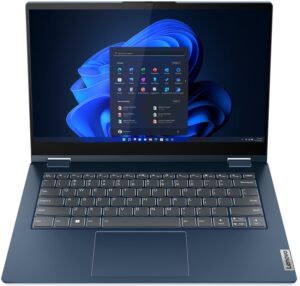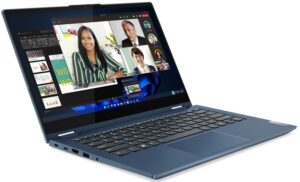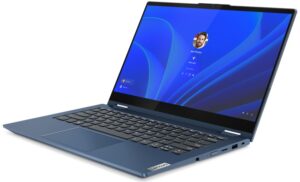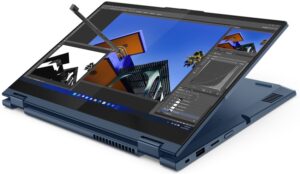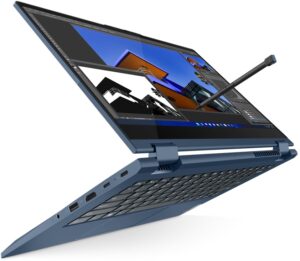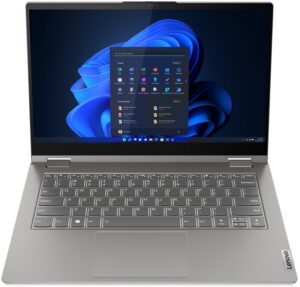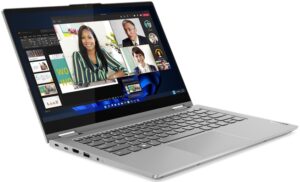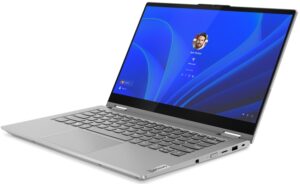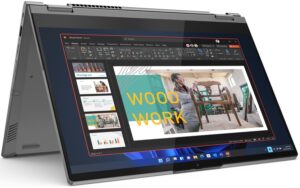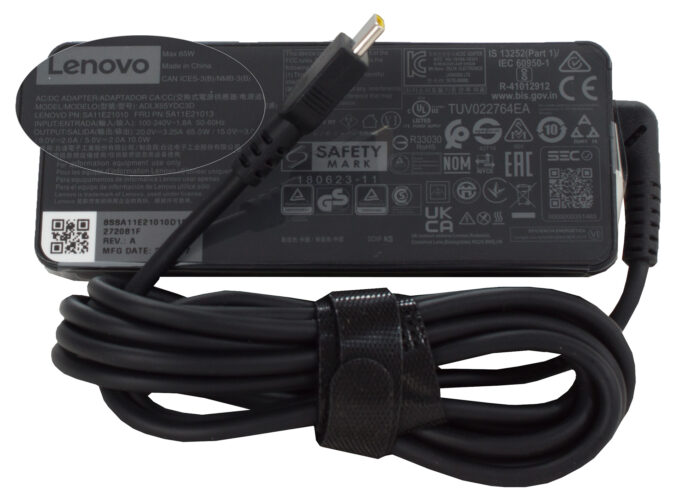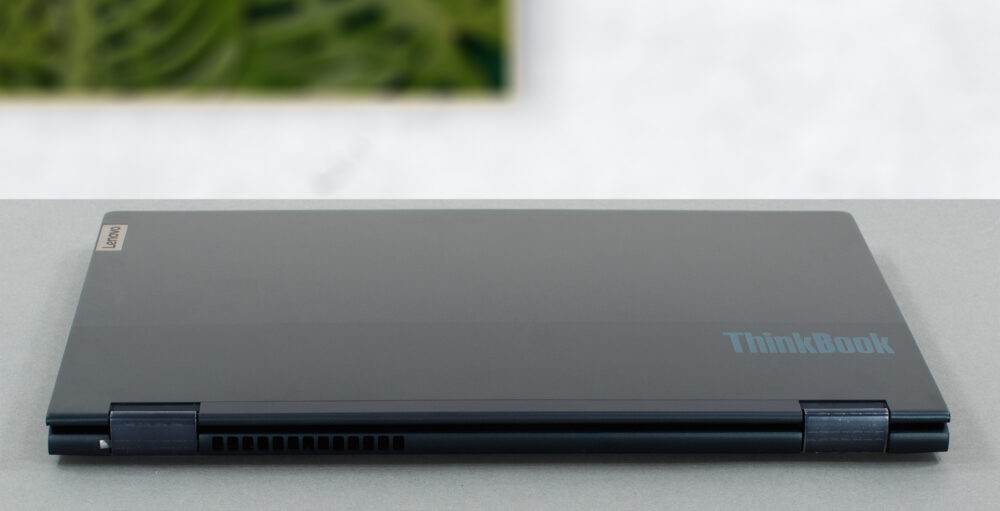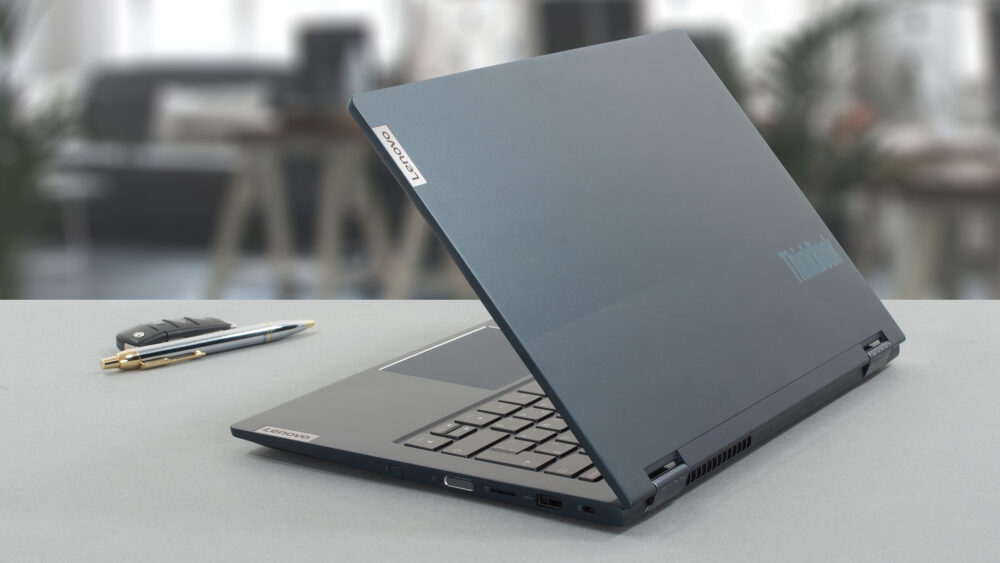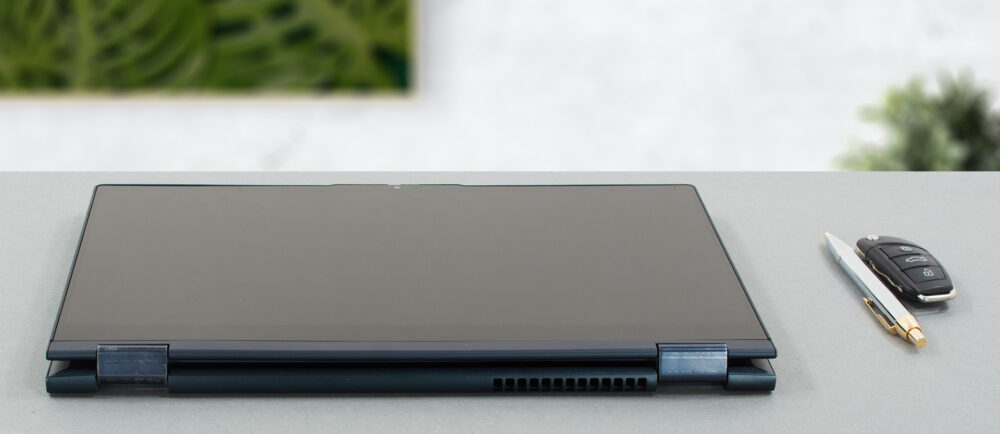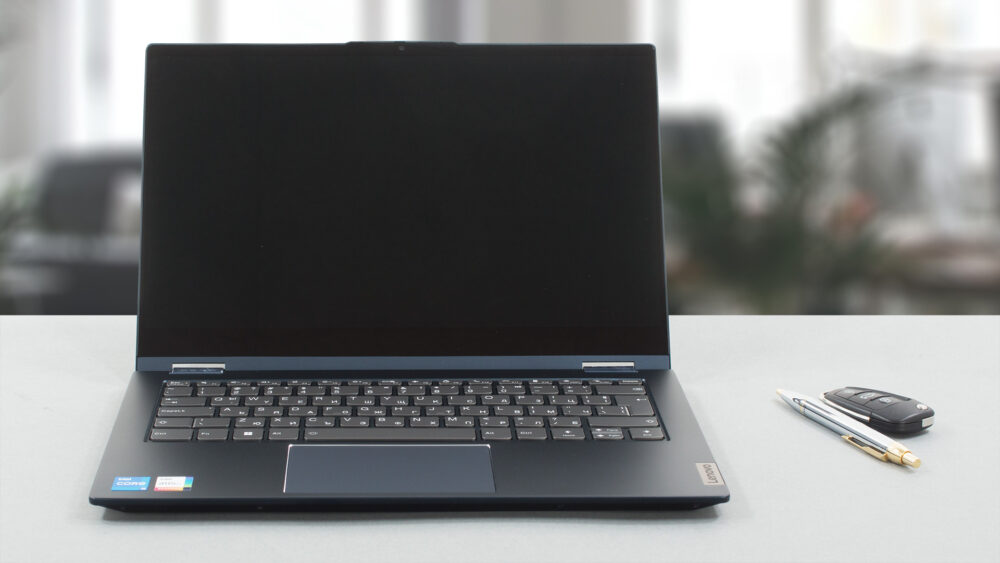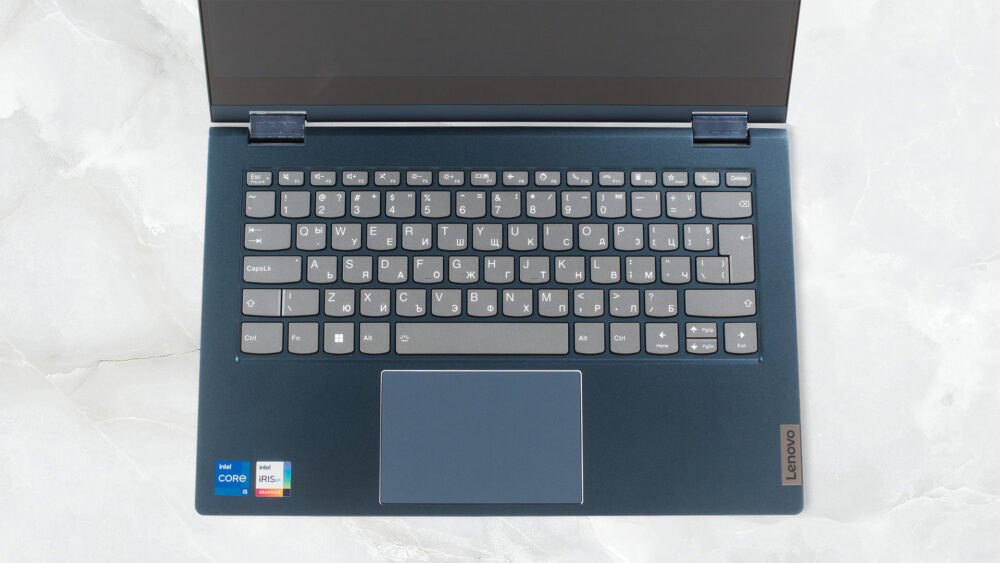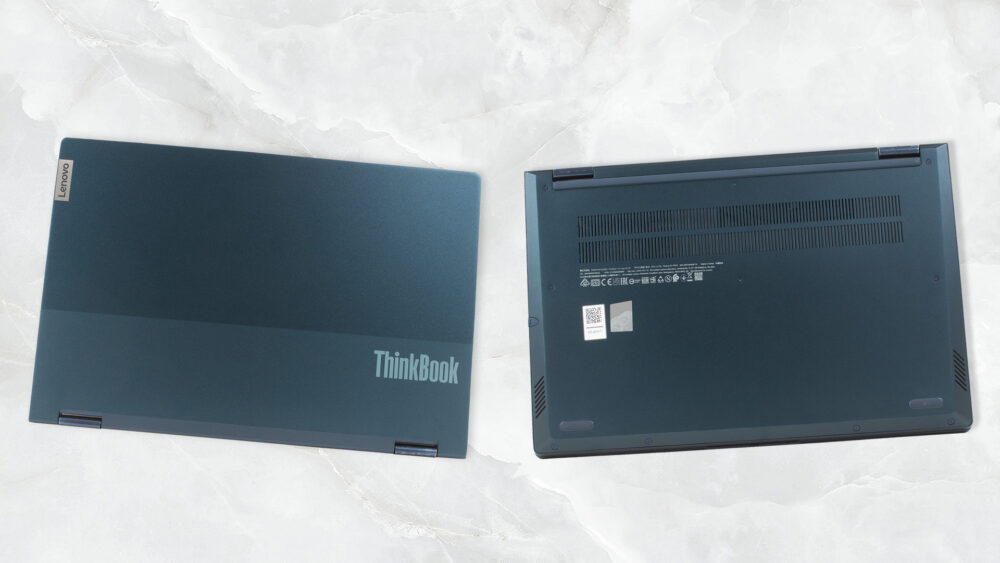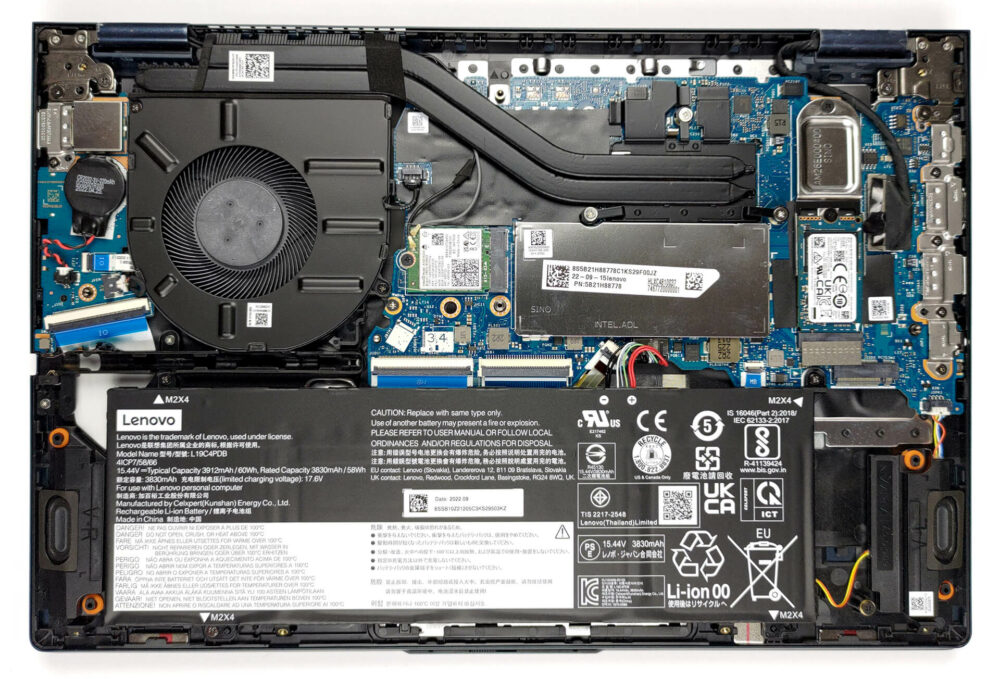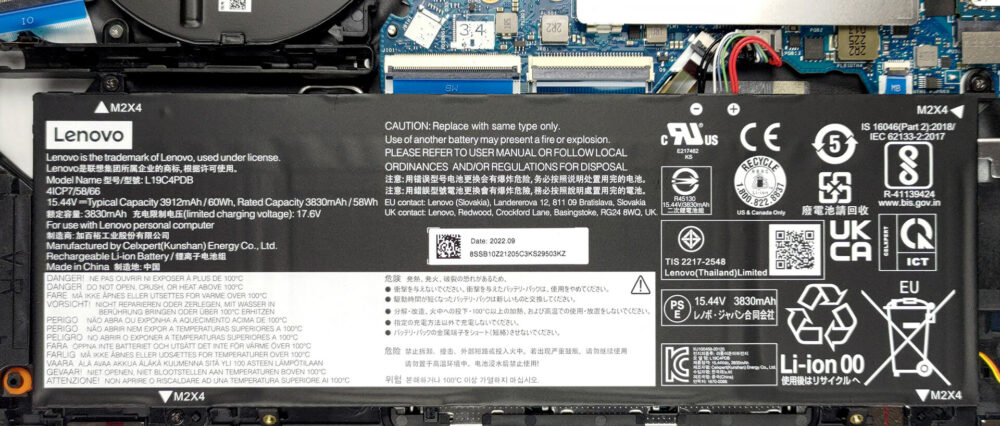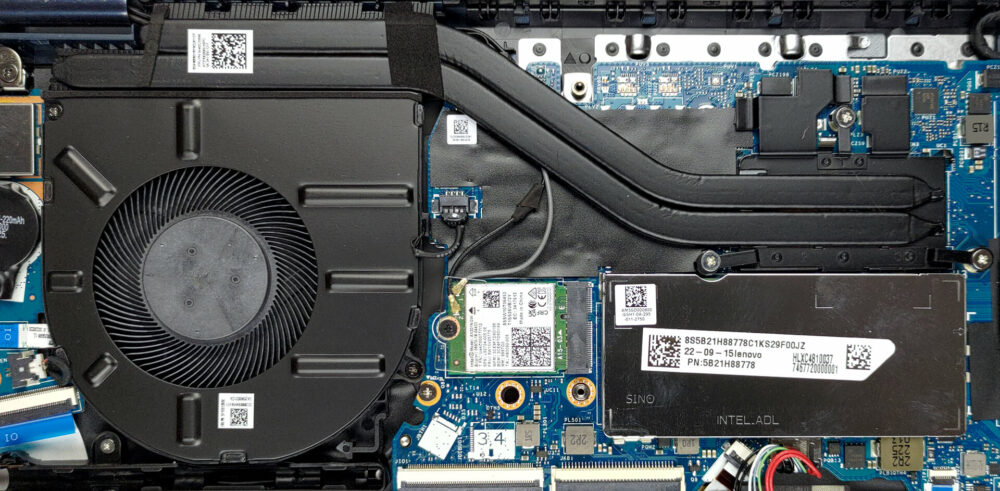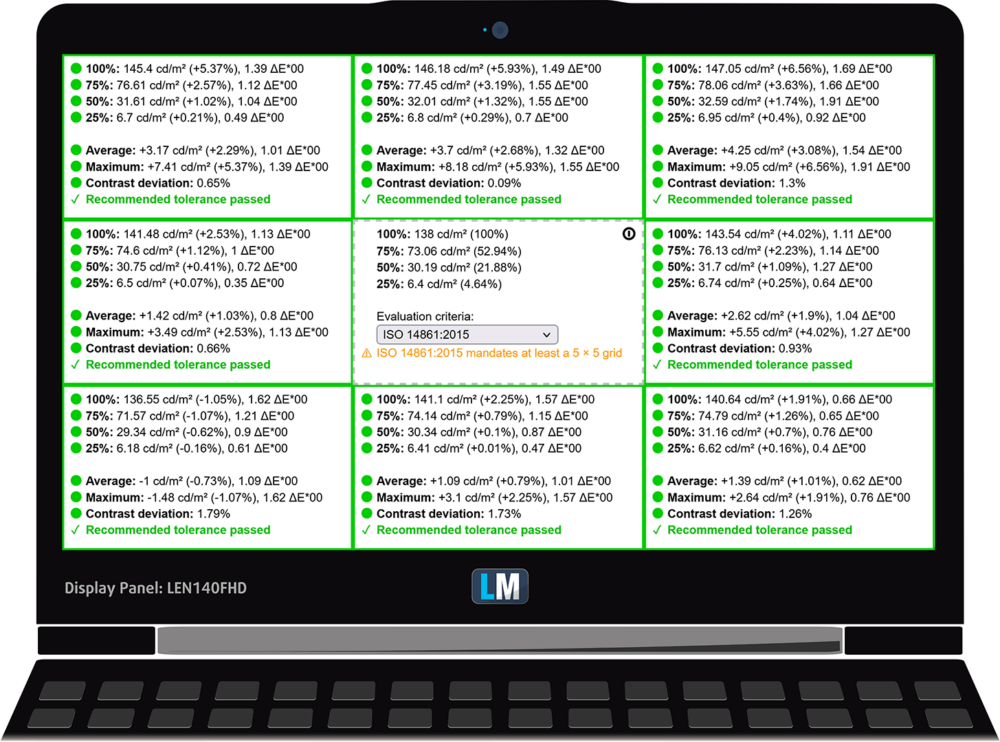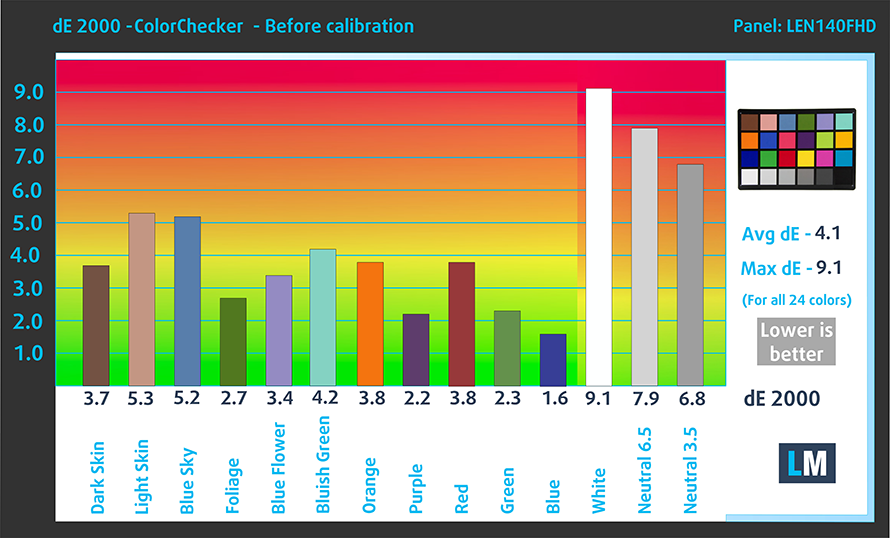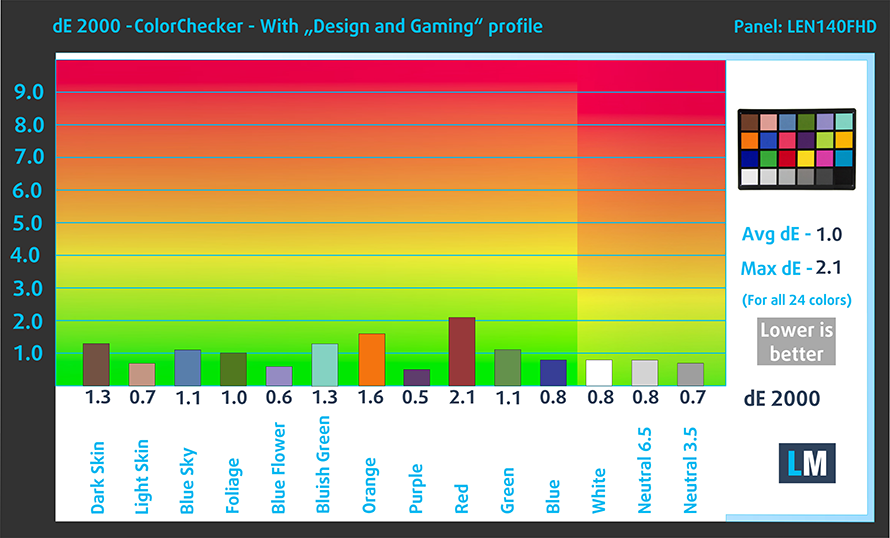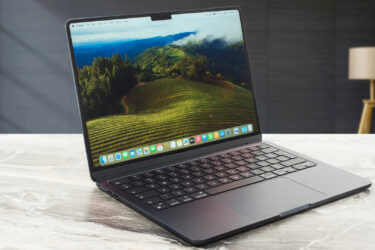Lenovo ThinkBook 14s Yoga Gen 2 review – they made it even better
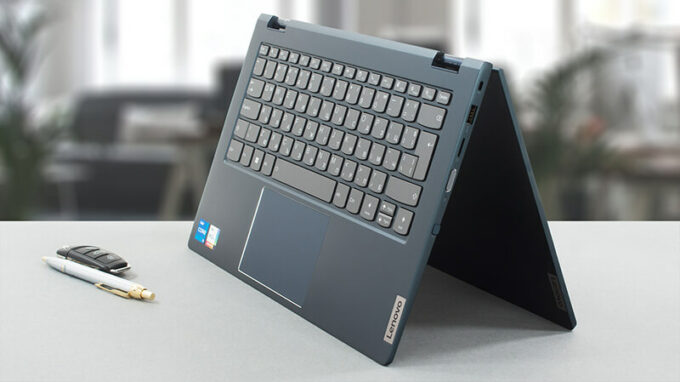 As we have said numerous times, the ThinkBook brand is generally a stylish take on the proven ThinkPad formula. Now, we’re going to talk about the ThinkBook 14s Yoga Gen 2. A slightly more special device from this family.
As we have said numerous times, the ThinkBook brand is generally a stylish take on the proven ThinkPad formula. Now, we’re going to talk about the ThinkBook 14s Yoga Gen 2. A slightly more special device from this family.
As you can imagine from the “Yoga” part of the name, it is a convertible. While business 2-in-1 laptops are anything but a novelty, this one has its own reasons to be on your radar.
First of all, it comes with a dedicated stylus. One that has its own housing inside the chassis of the device. Then, there is the hardware – Intel’s Alder Lake processors are on board with the top-of-the-line option being the Core i7-1255U.
So, you can expect both good performance and decent efficiency from it. But arguably the cream of the crop in the specs sheet is the display – a Full HD unit with 100% sRGB coverage and fantastic color accuracy with some tweaking.
Anyways, let’s check out its design and construction before we dig right into the testing results.
You can check the prices and configurations in our Specs System: https://laptopmedia.com/series/lenovo-thinkbook-14s-yoga-gen-2/
Contents
Specs Sheet
- HDD/SSD
- up to 1000GB SSD
- M.2 Slot
- 2x 2280 PCIe NVMe 4.0 x4 See photo
- RAM
- up to 16GB
- OS
- Windows 11 Pro, Windows 11 Home
- Battery
- 60Wh
- Body material
- Aluminum
- Dimensions
- 320 x 216 x 16.9 mm (12.60" x 8.50" x 0.67")
- Weight
- 1.50 kg (3.3 lbs)
- Ports and connectivity
- 1x USB Type-A
- 3.2 Gen 1 (5 Gbps)
- 1x USB Type-A
- 3.2 Gen 1 (5 Gbps), Sleep and Charge
- 1x USB Type-C
- 3.2 Gen 2 (10 Gbps), Power Delivery (PD), DisplayPort
- 1x USB Type-C
- 4.0, Thunderbolt 4, Power Delivery (PD), DisplayPort
- HDMI
- Card reader
- MicroSD
- Ethernet LAN
- Wi-Fi
- 802.11ax
- Bluetooth
- 5.2
- Audio jack
- 3.5mm Combo Jack
- Features
- Fingerprint reader
- Web camera
- HD / FHD
- Backlit keyboard
- Microphone
- Dual Array Microphone with AI Noise Cancellation, switchable audio modes
- Speakers
- 2x 2W Stereo Speakers, Dolby Atmos, Harman Speakers
- Optical drive
- Security Lock slot
- Kensington Nano Lock
All Lenovo ThinkBook 14s Yoga Gen 2 configurations
What’s in the box?
Inside the package, we found some paperwork, and a 65W USB Type-C charger – nothing more than the standard.
Design and construction
It’s great to see that Lenovo is adhering to the dual-tone design with all of its ThinkBook laptops. The ThinkBook 14s Yoga Gen 2 weighs 1.50 kg and has a profile of 16.9mm. This makes it pretty slim, but definitely not super light. You know, if you’re to use the machine as a tablet, these 1.50 kilos will become a strain in no time.
On the bright side, all body panels are made out of aluminum. The surface is a bit sticky for fingerprints, but it’s not too bad. What is better, though, is the strong chassis. We see almost no flex from the base. The lid is pretty tough too, thanks to the Gorilla Glass cover over the display.
Speaking of which, you won’t be able to access the display with a single hand. This is the case with most convertibles out there, so we won’t take points away from the ThinkBook 14s Yoga Gen 2. Thankfully, there is an HD Web camera above the IPS panel, with a Full HD shooter being an option.
Now is the moment to mention the dedicated stylus. It has 4096 levels of pressure sensitivity and works great with the glass display. A useful tip would be to clean your screen before using the included Pen.
This device’s keyboard is fantastic. It comes with a backlight, long key travel, and clicky feedback. It’s definitely among the best units we’ve tested on a 2-in-1. As for the touchpad, it has a size of 70 by 105 mm and features a Mylar surface. With that said, it is smooth, precise, and fast to respond.
On the bottom panel, you will find two speaker cutouts and a rather large ventilation grill. The hot air, respectively, is blown out through the back of the base, and is aimed directly at the bottom bezel of the display.
Ports
On the left side, you get a USB Type-C 3.2 (Gen. 2) port with Power Delivery and DisplayPort functions, a Thunderbolt 4 connector (either of these ports can be used for charging), an HDMI connector, a USB Type-A 3.2 (Gen. 1) port, and an Audio jack. Then, on the right, there is a Kensington Nano security slot, a USB Type-A 3.2 (Gen. 1) port, a MicroSD card slot, the power button, and the Pen slot. Here, you will also find the fingerprint reader, which is embedded in the power button.
Disassembly, upgrade options, and maintenance
To take this notebook apart, you need to undo a total of 10 Torx head screws, six of which are captive. After that, pry the bottom panel with a plastic tool, starting from the hinge gaps.
Inside, we find a 60Wh battery pack. It lasts for 10 hours and 30 minutes of Web browsing, or 8 hours and 30 minutes of video playback. To take it out, unplug the connector from the motherboard, and undo the three Phillips-head screws, holding the battery in place.
This laptop has 8GB of DDR4 RAM soldered to the motherboard. You get one SODIMM slot for further expansion. Storage-wise, there are two M.2 PCIe x4 slots, both of which support Gen 4 SSDs.
As for the cooling, there are two heat pipes, a heat sink, and a rather large fan. Furthermore, the VRMs have heat spreaders on top of them.
Display quality
Lenovo ThinkBook 14s Yoga Gen 2 uses a WUXGA IPS touchscreen panel, model number LEN140FHD (LEN889A). Its diagonal is 14″ (35.6 cm), and the resolution – 1920 x 1080. Additionally, the screen ratio is 16:9, the pixel density – 157 ppi, and their pitch – 0.16 x 0.16 mm. The screen can be considered Retina when viewed from at least 56 cm (from this distance, the average human eye can’t see the individual pixels).
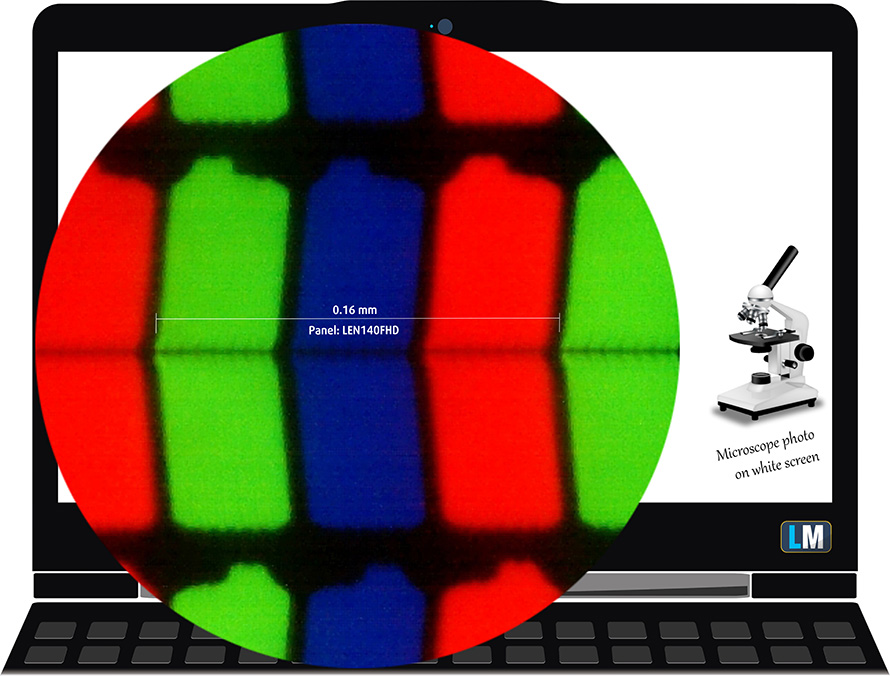
Viewing angles are comfortable. We have provided images at 45 degrees to evaluate quality.
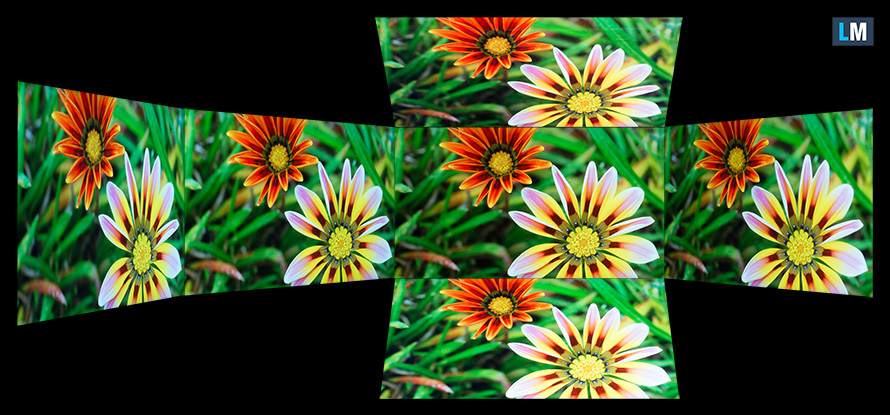
Also, a video with locked focus and exposure.
The maximum measured brightness is 347 nits (cd/m2) in the middle of the screen and 356 nits (cd/m2) average across the surface with a maximum deviation of 7%. The Correlated Color Temperature on a white screen and at maximum brightness is 6060K (average) – slightly warmer than the 6500K optimum for sRGB.
In the illustration below you can see how the display performs from a uniformity perspective. The illustration below shows how matters are for operational brightness levels (approximately 140 nits) – in this particular case at 69% Brightness (White level = 143 cd/m2, Black level = 0.07 cd/m2).
Values of dE2000 over 4.0 should not occur, and this parameter is one of the first you should check if you intend to use the laptop for color-sensitive work (a maximum tolerance of 2.0 ). The contrast ratio is excellent – 2020:1.
To make sure we are on the same page, we would like to give you a little introduction to the sRGB color gamut and the Adobe RGB. To start, there’s the CIE 1976 Uniform Chromaticity Diagram that represents the visible specter of colors by the human eye, giving you a better perception of the color gamut coverage and the color accuracy.
Inside the black triangle, you will see the standard color gamut (sRGB) that is being used by millions of people on HDTV and on the web. As for Adobe RGB, this is used in professional cameras, monitors, etc for printing. Basically, colors inside the black triangle are used by everyone and this is the essential part of the color quality and color accuracy of a mainstream notebook.
Still, we’ve included other color spaces like the famous DCI-P3 standard used by movie studios, as well as the digital UHD Rec.2020 standard. Rec.2020, however, is still a thing of the future and it’s difficult for today’s displays to cover that well. We’ve also included the so-called Michael Pointer gamut, or Pointer’s gamut, which represents the colors that naturally occur around us every day.
The yellow dotted line shows Lenovo ThinkBook 14s Yoga Gen 2’s color gamut coverage.
Its display covers almost 100% of the sRGB/ITU-R BT.709 (web/HDTV standard) in CIE1976.
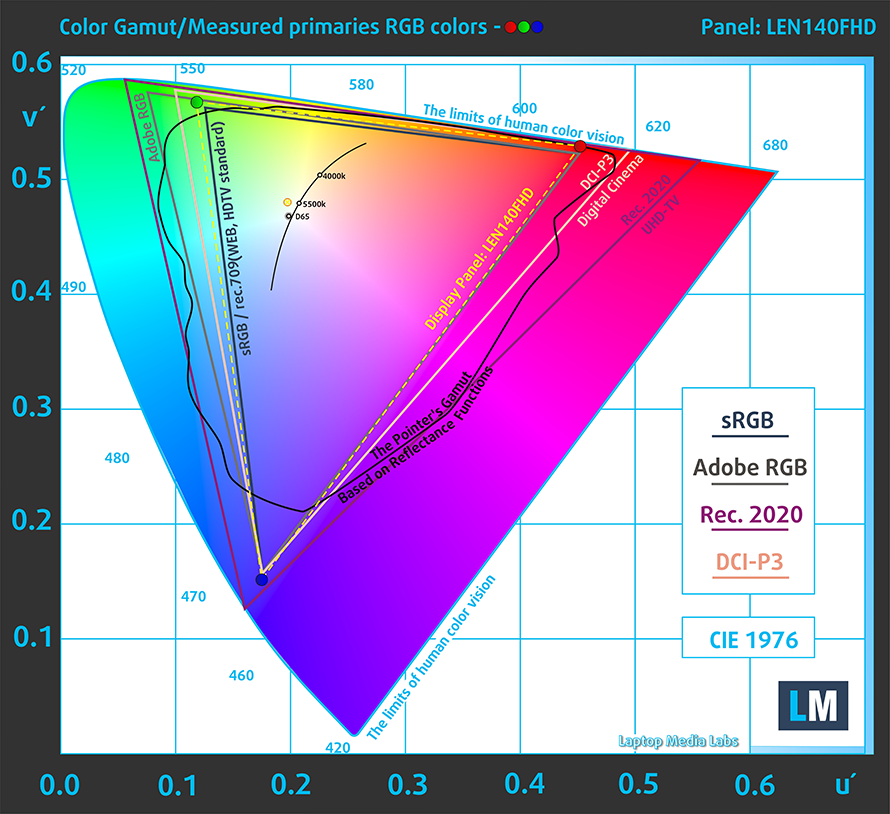
Our “Design and Gaming” profile delivers optimal color temperature (6500K) at 140 cd/m2 luminance and sRGB gamma mode.
We tested the accuracy of the display with 24 commonly used colors like light and dark human skin, blue sky, green grass, orange, etc. You can check out the results at factory condition and also, with the “Design and Gaming” profile.
Below you can compare the scores of Lenovo ThinkBook 14s Yoga Gen 2 with the default settings (left), and with the “Gaming and Web design” profile (right).
The next figure shows how well the display is able to reproduce really dark parts of an image, which is essential when watching movies or playing games in low ambient light.
The left side of the image represents the display with stock settings, while the right one is with the “Gaming and Web Design” profile activated. On the horizontal axis, you will find the grayscale, and on the vertical axis – the luminance of the display. On the two graphs below you can easily check for yourself how your display handles the darkest nuances but keep in mind that this also depends on the settings of your current display, the calibration, the viewing angle, and the surrounding light conditions.
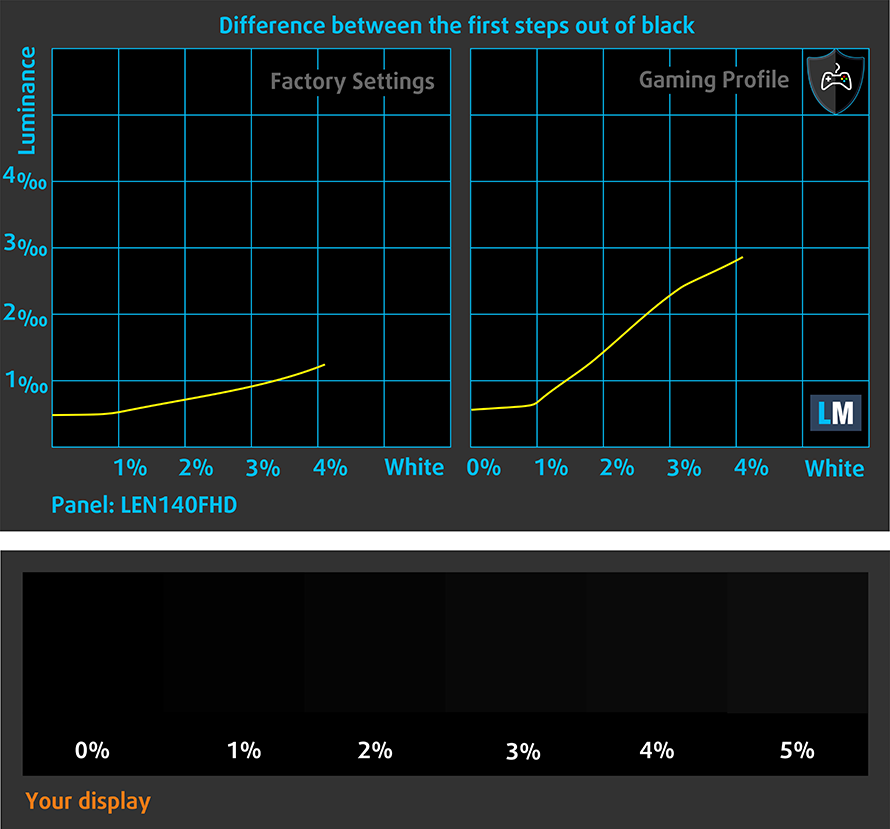
Response time (Gaming capabilities)
We test the reaction time of the pixels with the usual “black-to-white” and “white-to-black” method from 10% to 90% and vice versa.
We recorded Fall Time + Rise Time = 32 ms.

After that, we test the reaction time of the pixels with the usual “Gray-to-Gray” method from 50% White to 80% White and vice versa between 10% and 90% of the amplitude.
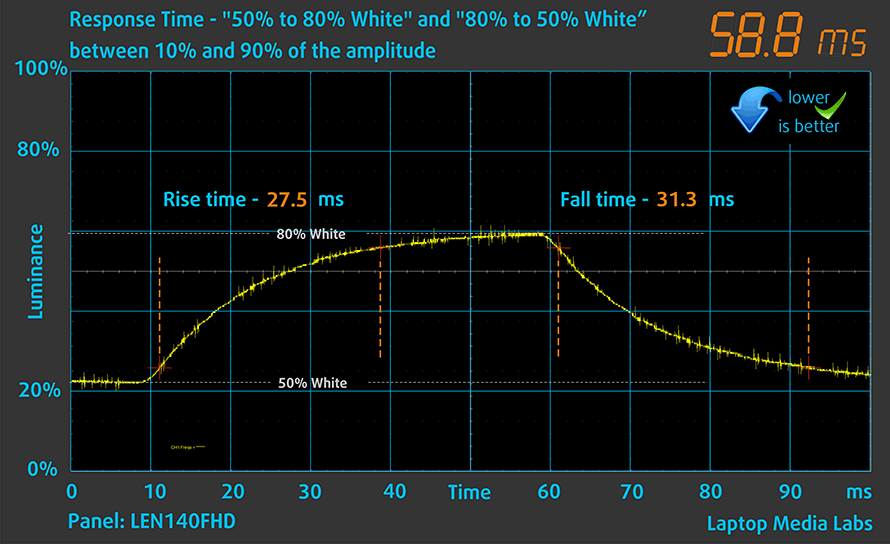
Health impact – PWM / Blue Light
PWM (Screen flickering)
Pulse-width modulation (PWM) is an easy way to control monitor brightness. When you lower the brightness, the light intensity of the backlight is not lowered, but instead turned off and on by the electronics with a frequency indistinguishable to the human eye. In these light impulses, the light/no-light time ratio varies, while brightness remains unchanged, which is harmful to your eyes. You can read more about that in our dedicated article on PWM.
Lenovo ThinkBook 14s Yoga Gen 2’s backlight doesn’t use PWM for brightness adjustment. This makes it comfortable for long periods of use.
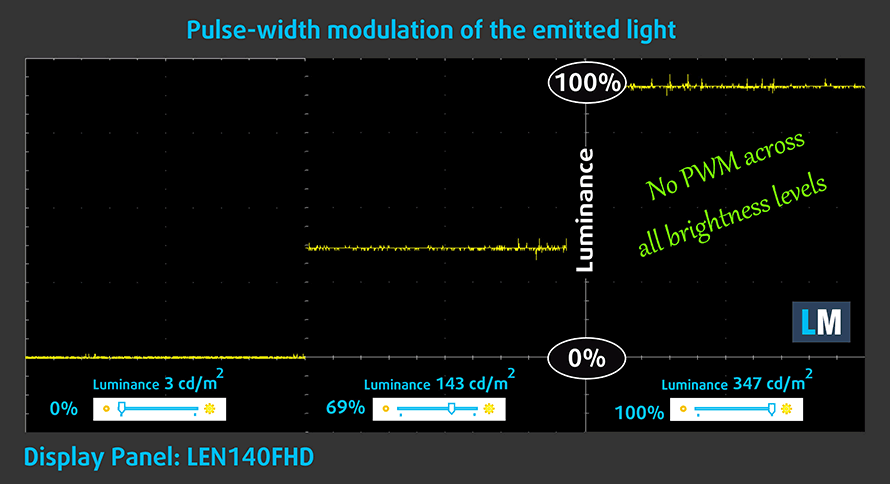
Blue light emissions
Installing our Health-Guard profile not only eliminates PWM but also reduces the harmful Blue Light emissions while keeping the colors of the screen perceptually accurate. If you’re not familiar with the Blue light, the TL;DR version is – emissions that negatively affect your eyes, skin, and your whole body. You can find more information about that in our dedicated article on Blue Light.
Gloss level measurement
Glossy-coated displays are sometimes inconvenient in high ambient light conditions. We show the level of reflection on the screen for the respective laptop when the display is turned off and the measurement angle is 60° (in this case, the result is 113 GU).
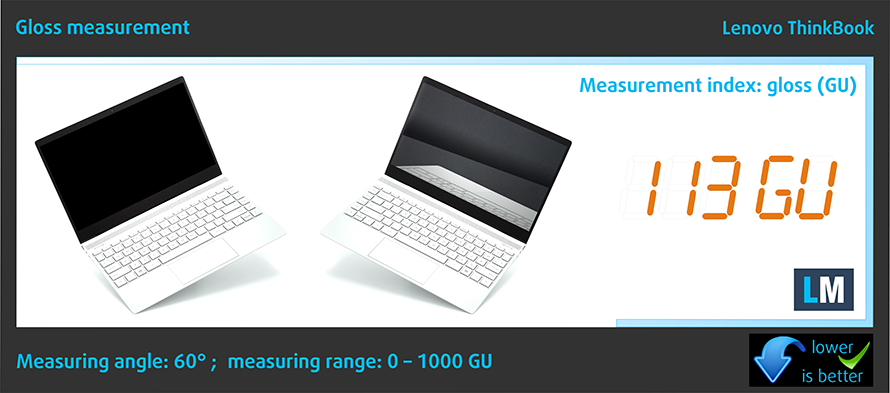
Buy our profiles
Since our profiles are tailored for each individual display model, this article and its respective profile package are meant for Lenovo ThinkBook 14s Yoga Gen 2 configurations with 14.0″ LEN140FHD (LEN889A) (WUXGA, 1920 × 1200) IPS.
*Should you have problems with downloading the purchased file, try using a different browser to open the link you’ll receive via e-mail. If the download target is a .php file instead of an archive, change the file extension to .zip or contact us at [email protected].
Read more about the profiles HERE.
In addition to receiving efficient and health-friendly profiles, by buying LaptopMedia's products you also support the development of our labs, where we test devices in order to produce the most objective reviews possible.

Office Work
Office Work should be used mostly by users who spend most of the time looking at pieces of text, tables or just surfing. This profile aims to deliver better distinctness and clarity by keeping a flat gamma curve (2.20), native color temperature and perceptually accurate colors.

Design and Gaming
This profile is aimed at designers who work with colors professionally, and for games and movies as well. Design and Gaming takes display panels to their limits, making them as accurate as possible in the sRGB IEC61966-2-1 standard for Web and HDTV, at white point D65.

Health-Guard
Health-Guard eliminates the harmful Pulse-Width Modulation (PWM) and reduces the negative Blue Light which affects our eyes and body. Since it’s custom tailored for every panel, it manages to keep the colors perceptually accurate. Health-Guard simulates paper so the pressure on the eyes is greatly reduced.
Get all 3 profiles with 33% discount
Sound
Lenovo ThinkBook 14s Yoga Gen 2’s speakers produce a sound of very good quality. Its low, mid, and high tones are clear of deviations.
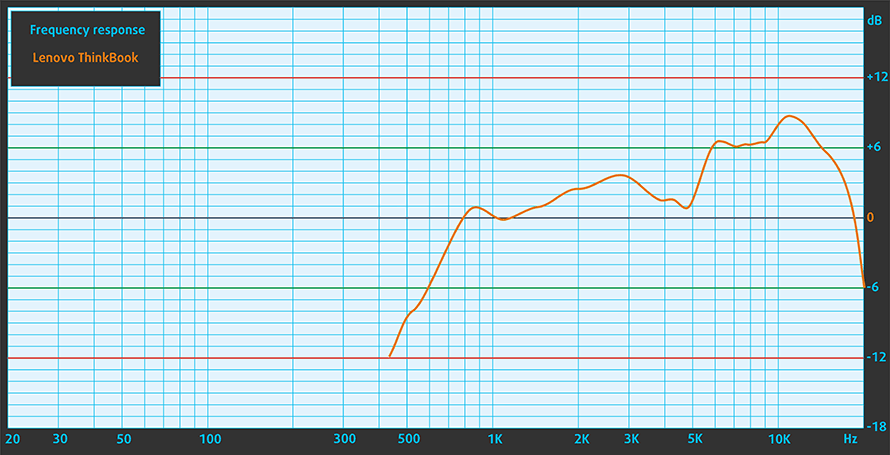
Drivers
All drivers and utilities for this notebook can be found here: https://pcsupport.lenovo.com/us/en/products/laptops-and-netbooks/thinkbook-series/thinkbook-14s-yoga-g2-iap/downloads/driver-list
Battery
Now, we conduct the battery tests with the Windows Better performance setting turned on, screen brightness adjusted to 120 nits, and all other programs turned off except for the one we are testing the notebook with. Here, the 60Wh battery pack lasts for 10 hours and 27 minutes of Web browsing, or 8 hours and 28 minutes of video playback.
In order to simulate real-life conditions, we used our own script for automatic web browsing through over 70 websites.
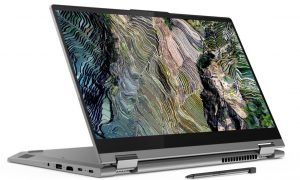

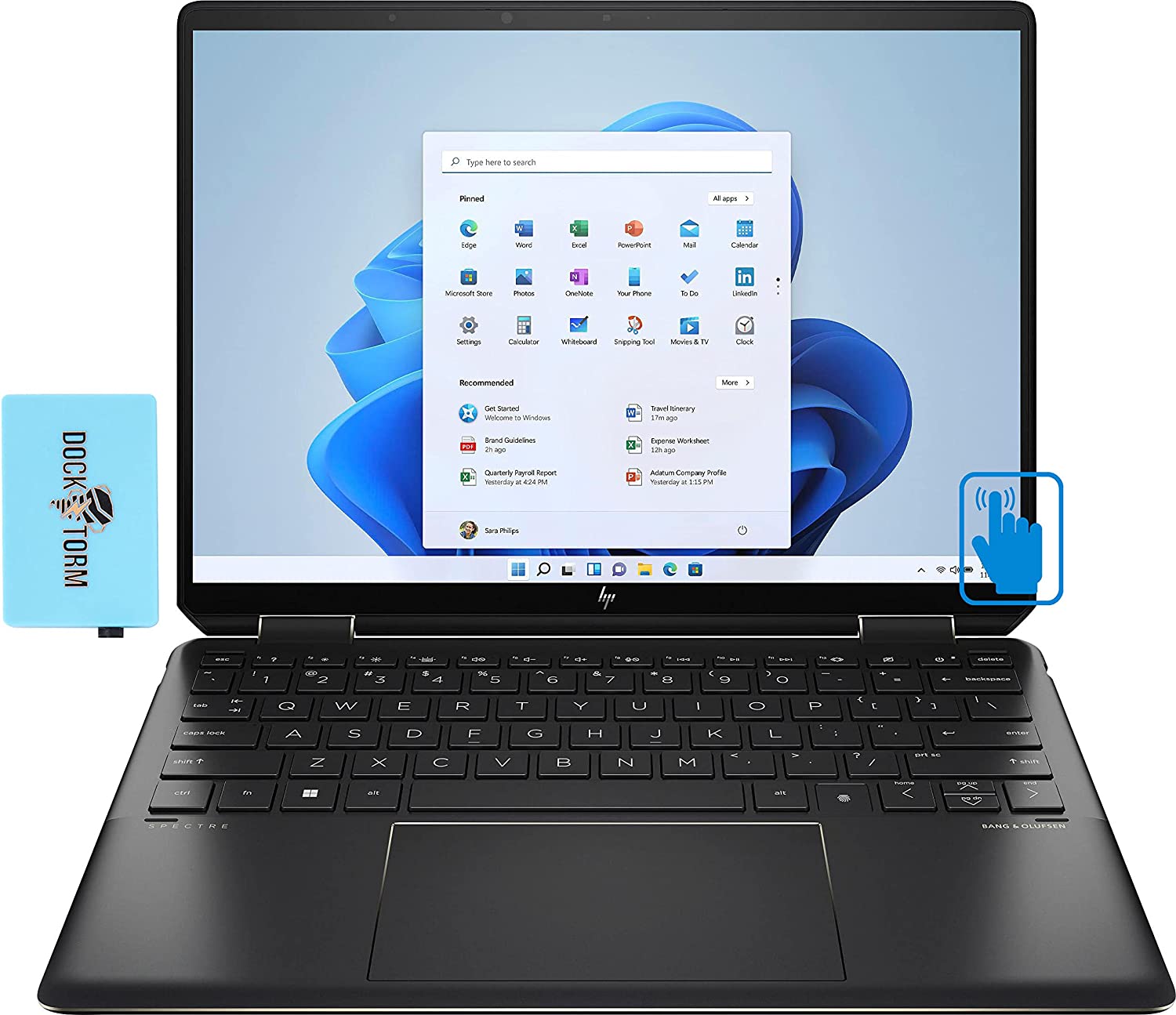
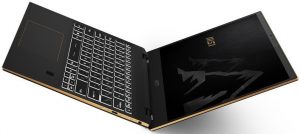
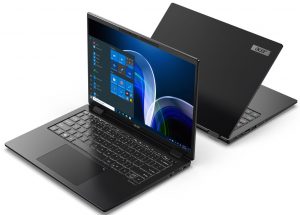
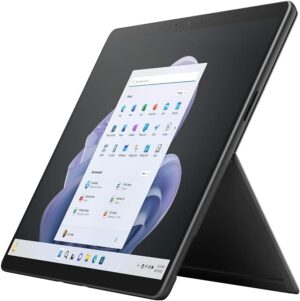
For every test like this, we use the same video in HD.






CPU options
You can find this machine equipped with either the Core i5-1235U or the Core i7-1255U.
Results are from the Cinebench R23 CPU test (the higher the score, the better)
Results are from our Photoshop benchmark test (the lower the score, the better)
GPU options
You have no choice over the graphics card, though. The only “option” is the integrated Iris Xe Graphics G7, inside both of the aforementioned processors.
Results are from the 3DMark: Time Spy (Graphics) benchmark (higher the score, the better)
Results are from the 3DMark: Fire Strike (Graphics) benchmark (higher the score, the better)
Results are from the 3DMark: Wild Life benchmark (higher the score, the better)
Results are from the Unigine Superposition benchmark (higher the score, the better)
Gaming tests
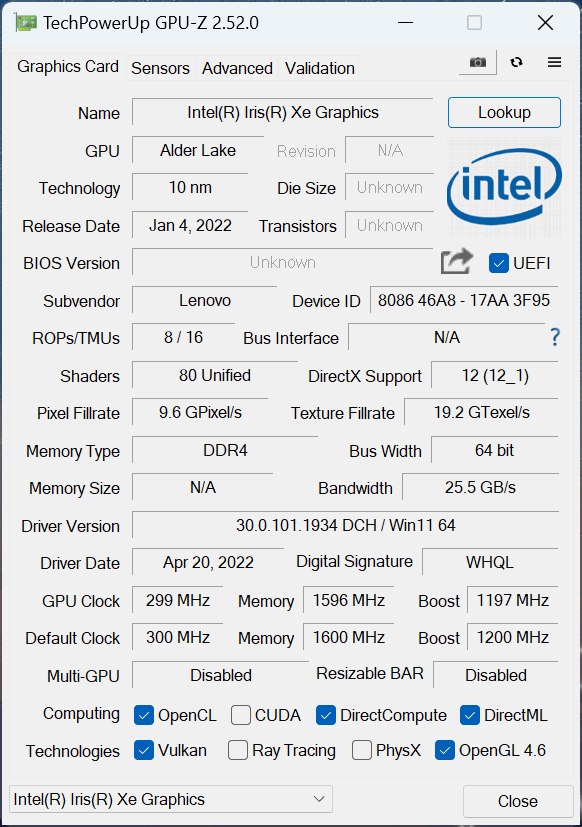

| CS:GO | HD 1080p, Low (Check settings) | HD 1080p, Medium (Check settings) | HD 1080p, MAX (Check settings) |
|---|---|---|---|
| Average FPS | 86 fps | 69 fps | 37 fps |

| DOTA 2 | HD 1080p, Low (Check settings) | HD 1080p, Normal (Check settings) | HD 1080p, High (Check settings) |
|---|---|---|---|
| Average FPS | 97 fps | 64 fps | 36 fps |
Temperatures and comfort
Max CPU load
In this test we use 100% on the CPU cores, monitoring their frequencies and chip temperature. The first column shows a computer’s reaction to a short load (2-10 seconds), the second column simulates a serious task (between 15 and 30 seconds), and the third column is a good indicator of how good the laptop is for long loads such as video rendering.
Average P-core frequency; Average E-core frequency; CPU temp.; Package Power
| Intel Core i5-1235U (15W TDP) | 0:02 – 0:10 sec | 0:15 – 0:30 sec | 10:00 – 15:00 min |
|---|---|---|---|
| Lenovo ThinkBook 14s Yoga Gen 2 | 2.55 GHz @ 2.39 GHz @ 70°C @ 32W | 2.49 GHz @ 2.38 GHz @ 75°C @ 32W | 2.20 GHz @ 2.10 GHz @ 71°C @ 24W |
| Microsoft Surface Pro 9 | 3.32 GHz @ 2.78 GHz @ 75°C @ 46W | 3.06 GHz @ 2.54 GHz @ 82°C @ 42W | 1.91 GHz @ 1.79 GHz @ 64°C @ 19W |
| Microsoft Surface Laptop 5 (13.5″) | 3.35 GHz @ 2.84 GHz @ 69°C @ 44W | 3.27 GHz @ 2.78 GHz @ 80°C @ 42W | 2.24 GHz @ 2.17 GHz @ 71°C @ 22W |
| ASUS Vivobook 15 (X1502) | 2.91 GHz @ 2.49 GHz @ 78°C @ 39W | 2.62 GHz @ 2.37 GHz @ 81°C @ 33W | 2.30 GHz @ 2.19 GHz @ 68°C @ 27W |
| Acer TravelMate P2 (TMP215-54) | 3.67 GHz @ 3.09 GHz @ 90°C @ 55W | 2.83 GHz @ 2.55 GHz @ 85°C @ 33W | 2.59 GHz @ 2.44 GHz @ 84°C @ 28W |
| HP EliteBook 650 G9 | 3.26 GHz @ 2.80 GHz @ 89°C @ 45W | 2.63 GHz @ 2.39 GHz @ 91°C @ 32W | 2.25 GHz @ 2.15 GHz @ 79°C @ 24W |
| HP EliteBook 640 G9 | 3.27 GHz @ 2.77 GHz @ 90°C @ 45W | 2.53 GHz @ 2.32 GHz @ 90°C @ 30W | 2.32 GHz @ 2.17 GHz @ 74°C @ 24W |
| HP EliteBook 840 G9 | 3.09 GHz @ 2.75 GHz @ 83°C @ 46W | 2.73 GHz @ 2.46 GHz @ 89°C @ 37W | 1.58 GHz @ 1.67 GHz @ 61°C @ 17W |
| Lenovo ThinkPad E14 Gen 4 | 3.28 GHz @ 2.77 GHz @ 84°C @ 44W | 3.18 GHz @ 2.77 GHz @ 90°C @ 44W | 2.49 GHz @ 2.28 GHz @ 77°C @ 28W |
| HP Pavilion Plus 14 (14-eh0000) | 2.85 GHz @ 2.43 GHz @ 77°C @ 39W | 2.34 GHz @ 2.10 GHz @ 75°C @ 29W | 1.84 GHz @ 1.79 GHz @ 65°C @ 20W |
| Lenovo IdeaPad 5 (15″, 2022) | 3.60 GHz @ 3.08 GHz @ 73°C @ 55W | 3.44 GHz @ 2.95 GHz @ 88°C @ 51W | 2.80 GHz @ 2.49 GHz @ 69°C @ 35W |
| Lenovo ThinkPad L14 Gen 3 | 3.20 GHz @ 2.77 GHz @ 83°C @ 44W | 3.10 GHz @ 2.71 GHz @ 94°C @ 43W | 1.89 GHz @ 1.95 GHz @ 72°C @ 20W |
| Acer Aspire Vero (AV14-51) | 3.63 GHz @ 2.87 GHz @ 84°C @ 55W | 2.73 GHz @ 2.36 GHz @ 81°C @ 33W | 2.49 GHz @ 2.23 GHz @ 79°C @ 28W |
| MSI Modern 14 (C12M) | 3.17 GHz @ 2.69 GHz @ 77°C @ 45W | 3.10 GHz @ 2.61 GHz @ 81°C @ 45W | 2.69 GHz @ 2.45 GHz @ 78°C @ 35W |
| Dell Latitude 15 5530 | 3.57 GHz @ 3.02 GHz @ 94°C @ 52W | 2.03 GHz @ 2.09 GHz @ 76°C @ 21W | 2.24 GHz @ 2.19 GHz @ 64°C @ 23W |
When it comes to short and medium loads, the ThinkBook 14s Yoga Gen 2 shows a rather low clock speed. It is able to maintain it for a long time, beating a couple of devices from the same class in the last checkpoint.
Comfort during full load
Thankfully, the external temperatures and the noise levels are pretty low.
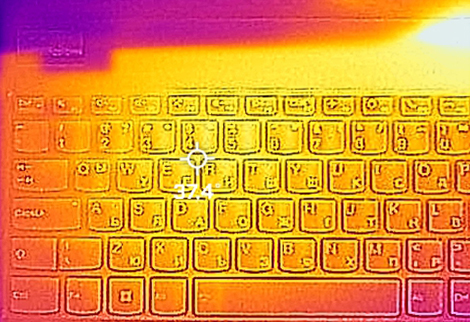
Verdict
 Despite the ever so slightly suboptimal performance, the ThinkBook 14s Yoga Gen 2 is one of the best business convertibles for the money. It will last you for an entire workday worth of use, and it will remain cool and quiet under any circumstance.
Despite the ever so slightly suboptimal performance, the ThinkBook 14s Yoga Gen 2 is one of the best business convertibles for the money. It will last you for an entire workday worth of use, and it will remain cool and quiet under any circumstance.
In addition, you can upgrade its memory via the single SODIMM slot, and the storage, thanks to the two M.2 PCIe x4 Gen 4 slots. The port selection on the outside is even more impressive.
It includes a Thunderbolt 4 connector, a MicroSD card slot, a couple of fast USB Type-As, an HDMI connector, and another USB Type-C port with Power Delivery and DisplayPort functions.
Lenovo ThinkBook 14s Yoga Gen 2’s touchscreen IPS panel has a Full HD resolution, comfortable viewing angles, and an excellent contrast ratio. It covers almost the entire sRGB color gamut and doesn’t use PWM for brightness adjustment. In addition, our Gaming and Web design profile improves the color accuracy to a point, which lets you use the laptop for professional color-related work.
And if this was not enough, the dedicated stylus allows you to do magic on the screen, thanks to the glass surface and the 4096 levels of pressure sensitivity.
We don’t want to pass the business-esque capability of the laptop either. It has a fingerprint reader embedded in the power button, and one of the best keyboards you’ll ever see on a 2-in-1 device.
The speakers are also good, and the only dissatisfaction one may have with this machine is its weight. Not that the laptop is heavy, it could just be a bit lighter.
You can check the prices and configurations in our Specs System: https://laptopmedia.com/series/lenovo-thinkbook-14s-yoga-gen-2/
Pros
- Thunderbolt 4, Wi-Fi 6 connection, and a MicroSD card reader on board
- 2x M.2 PCIe x4 Gen 4 slots + RAM-SODIMM slot
- Covers nearly 100% of the sRGB color gamut and has accurate color representation with our Gaming and Web design profile (LEN140FHD (LEN889A))
- Included stylus
- PWM-free display (LEN140FHD (LEN889A))
- Great keyboard experience
- Good battery life
Cons
- Some room for performance improvement
- Feels a bit heavy in tablet mode
